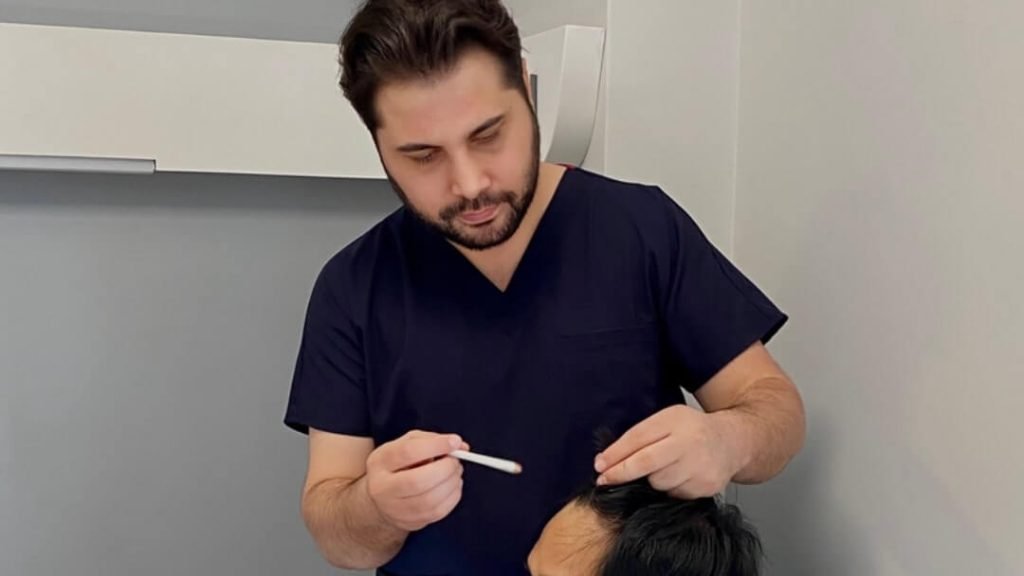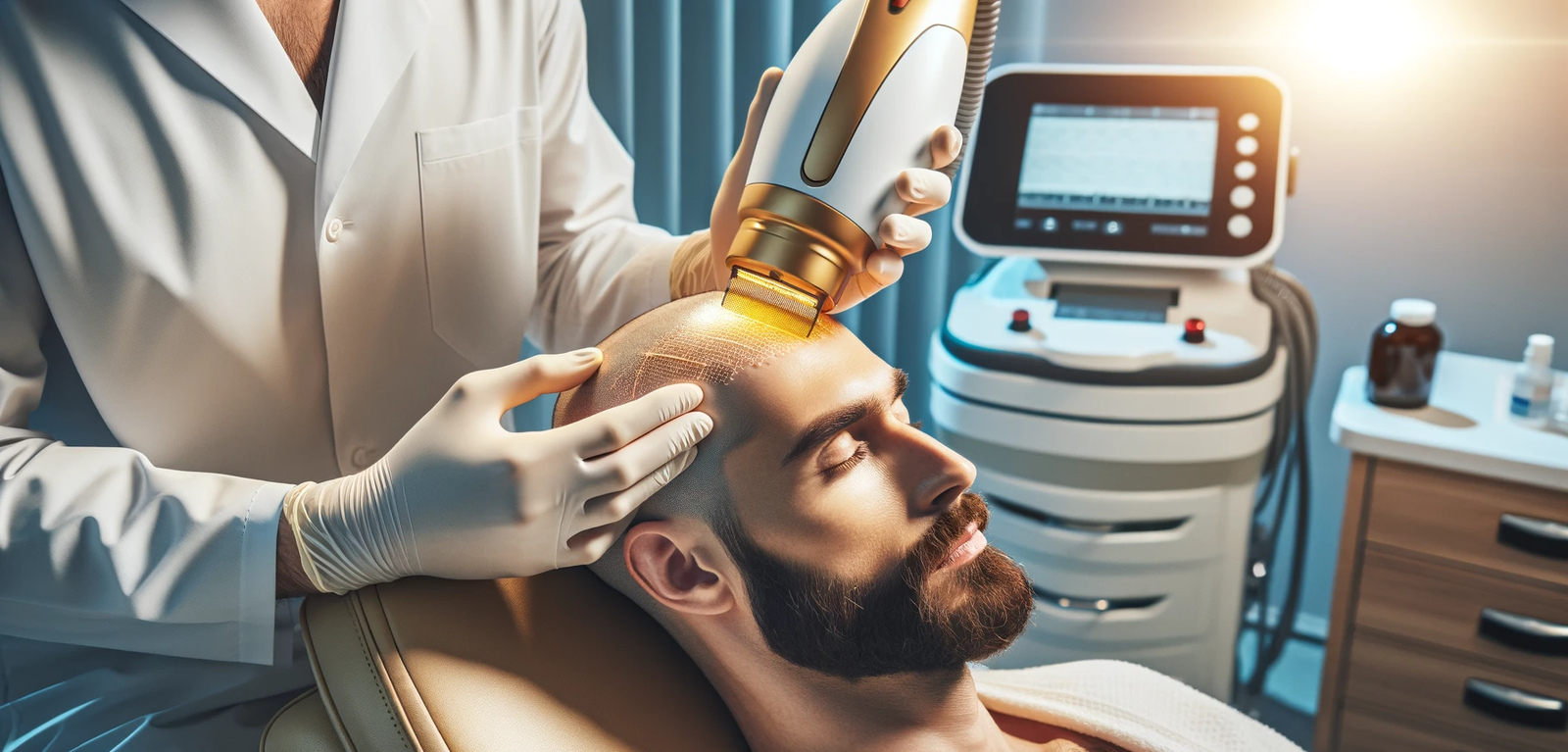Scar and Burn Treatment in Turkey
Summary About Scar and Burn Treatment in Turkey
| Duration of Operation | 8-10 hours |
| Operation Area | Head |
| Anesthesia Type | Local |
| Pain Treshold | After the Operation |
| Start Time | 1 Day After |
| First Shower | 2 Days Later |
| Recovery Time | 15 Days |
| Re-operation Status | No Need |
| Gym-Cardio | 15 Days |
| Suture Mark | No Pain |
| Age Limit | 18 |

Turkey has emerged as a leading destination for hair transplant procedures, attracting individuals worldwide. However, post-operative care, particularly in the context of scar and burn treatment, is a crucial aspect that often goes overlooked. Post-hair transplant, patients may face issues like scarring or minor burns due to the surgical equipment. This is where Turkey’s advanced medical sector steps in, offering innovative and effective solutions.
What are the Advantages of Scar and Burn Treatment?
There are some benefits of scar and burn treatment. The first advantage is related to the appearance. People with hair loss and baldness problems experience this problem for various reasons, two of which are scarring and burning.
That is why people are not pleased with their appearance and want to eliminate this problem. Thanks to this treatment, people can avoid this problem and the anxiety and stress caused by their appearance.




















Scar and Burn Treatment Procedure Steps
First, if you have a scar and burn problems on your scalp because of a hair transplant procedure, consult a professional. They can examine your scalp and suggest the best treatment suitable for you. After deciding on the treatment, you will get ready for the operation. Before the operation, you will be enlightened about the treatment and given instructions and guidelines. Later, the surgeon will determine the donor area and the number of hair follicles required for the transplant. Then, the hair follicles are extracted from the donor area and implanted into the recipient area.
What are the Different Scar and Burn Treatment Techniques?
The hair transplantation applied for scar and burn treatment is the FUE method. The Follicular Extraction Unit, known as the FUE method, is a surgical procedure used for hair transplant treatment. During this method, hair follicles are taken from other body parts and transferred to the hairless area.
Mesotherapy treatment is another common scar and burns treatment in Turkey. This non-surgical procedure provides hair growth in the hairless area. The needed vitamins, antioxidants, enzymes, and hormones are injected into the skin during this treatment. With hair mesotherapy in Turkey, you can eliminate hair loss caused by scars and burns.
Planning Your Scar and Burn Treatment in Turkey
If you want to get a scar and burn treatment, you can consider getting it in Turkey. Our Wonder Hair Clinic is the best place to get a hair transplant. With affordable prices and professionals, we provide the best hair transplant treatments in Turkey. Remember that planning your treatment is very important if you want to get life-long results you will be satisfied with.

Who is Fit for Scar and Burn Treatment Procedure?
People with scars and burns on their scalp are suitable for scar and burn treatment. Since the hair is not growing on the scalp due to scarring and burns, people experience hair loss and baldness and want to get rid of this problem. Thanks to this, they can avoid it.
Why Choose Turkey for Scar and Burn Treatment?
There are several reasons for choosing Turkey for scar and burn treatment. First, Turkey is very affordable regarding hair transplant treatments, including these treatments. For this reason, many people around the world come and get the best treatment in Turkey.
In addition, hair transplant professionals are very good at their job. There are many qualified and experienced professionals in Turkey. Similarly, our clinic, Wonder Hair Clinic, will provide you with the best treatment with our well-qualified doctors.
Cost of Scar and Burn Treatment in Turkey
The cost of scar and burn treatment varies depending on the number of hair follicles to be transplanted, the hair transplant clinic, and the professional’s qualifications and experience. However, when compared to other hair transplant clinics all around the world, the ones that are in Turkey are more affordable. If you wonder about the cost of this treatment at Wonder Hair Clinic, you can visit, call, or e-mail us.
Preparing for Your Scar and Burn Treatment
The first thing to do to prepare for your treatment is to find a hair transplant clinic with experienced and qualified professionals. After that, preparation includes budget, travel, and accommodation arrangements. When you go to an appointment, they will give the instructions and guidelines for your treatment. Attention to these instructions and procedures is significant for a better process and result.
In addition, keep in mind that you should stop smoking and drinking alcohol before the treatment since it affects the operation and causes side effects such as low blood pressure.
What to Expect During Your Scar and Burn Treatment in Turkey?
During your scar and burn treatment in Turkey, you will get professional help for your problem. The duration of the treatment can change for every person, but generally, the treatment is done in one day. In some cases, the treatment can take more hours if the area to be transplanted is wide.
What Should Be Done After Scar and Burn Treatment?
You must follow what your doctor tells you for a better healing process and result. The instructions given to you about the healing process are essential for a better result. After treatment, ensure you do not touch or scratch the treated area since it can also lead to an infection. Besides, you must consider what you consume before and after the procedure. That is why you should avoid consuming too much caffeine, smoking, and drinking alcohol.
Frequently Asked Questions About Scar And Burn Treatment
How do you get rid of scars after hair transplant?
Remaining scars after a hair transplant require time, patience, and appropriate aftercare. It’s vital to follow your surgeon’s post-operative instructions to ensure optimal healing. Avoiding direct sunlight on the scarred area can prevent hyperpigmentation, so consider wearing a hat outdoors. Gentle massages can increase blood flow to the area, promoting healing and reducing scar visibility. Topical treatments like silicone gel sheets or vitamin E oil can help soften and flatten scars. If scars remain prominent after a year, consider medical treatments like microneedling, laser therapy, or even steroid injections. It’s essential to consult with a dermatologist or hair transplant specialist for the best-personalized advice. Remember, while you can significantly reduce the appearance of scars, eliminating them may not always be possible.
Can hair grow through burn scars?
Hair growth through burn scars can be challenging. When the skin suffers a burn, the damage can extend to the hair follicles responsible for growth. If a burn is superficial, such as a first-degree burn, hair growth is usually unaffected because the underlying hair follicles remain intact. However, in more severe burns, such as second-degree or third-degree burns, the damage often reaches deeper layers of the skin and can destroy hair follicles. When hair follicles are damaged or destroyed, they lose their ability to produce hair. As a result, areas with severe burn scars often do not regrow hair naturally. Nevertheless, medical advancements like hair transplant surgery or scar revision techniques can help restore hair in these areas. Still, the success rate and outcome can vary based on the individual and the severity of the scar.
Do hair transplant scars go away?
Hair transplant procedures, like FUE (Follicular Unit Extraction) and FUT (Follicular Unit Transplantation), can result in minor scarring. In the FUE method, tiny dot scars are left at the back of the scalp from where individual hair grafts are extracted. These scars become less noticeable over time and can be easily concealed by surrounding hair. In the FUT method, a linear scar is left at the back of the scalp, where a strip of hair-bearing skin is removed. This scar can be more noticeable but can be hidden by longer hair. While hair transplant scars fade and become less visible over time, they don’t disappear completely. However, advancements in techniques and post-operative care have made scarring less prominent than in the past. Following post-surgery care instructions and consulting with a skilled surgeon is essential to minimize scarring.
How long does it take for scars to fade after a hair transplant?
After a hair transplant, the time it takes for scars to fade varies depending on the individual’s healing process and the specific transplant method. Generally, for methods like Follicular Unit Transplantation (FUT), which involves removing a strip of scalp, a linear scar is left behind, and it can take several months to a year for this scar to become less noticeable. For Follicular Unit Extraction (FUE), where individual follicular units are extracted, multiple tiny dot scars typically fade more rapidly and become barely perceptible within a few months. Skin type, age, and post-operative care significantly affect scar healing. It’s crucial to follow post-operative instructions diligently and avoid direct sun exposure to the scars, as this can cause them to darken. Proper care can accelerate healing and make scars less prominent over time.
How long does it take for a burn scar to heal fully?
The healing time for burn scars can vary significantly based on the severity of the burn. First-degree burns typically heal within a week and may not leave any scars. Second-degree burns can take anywhere from a few days to a few weeks to heal, with a potential for scarring depending on the burn’s depth. Third and fourth-degree burns are the most severe and always leave scars. While the initial healing may occur over weeks, the scars can take months to years to mature and may never fully disappear. Protecting the burn area from direct sunlight is essential, as it can cause the scar to darken and become more noticeable. For scar and burn treatment, keeping the area moisturized is crucial to minimize scarring. Over-the-counter creams and ointments can help, but consult a dermatologist or plastic surgeon for more severe scars for treatments like laser therapy, chemical peels, or surgical revision.